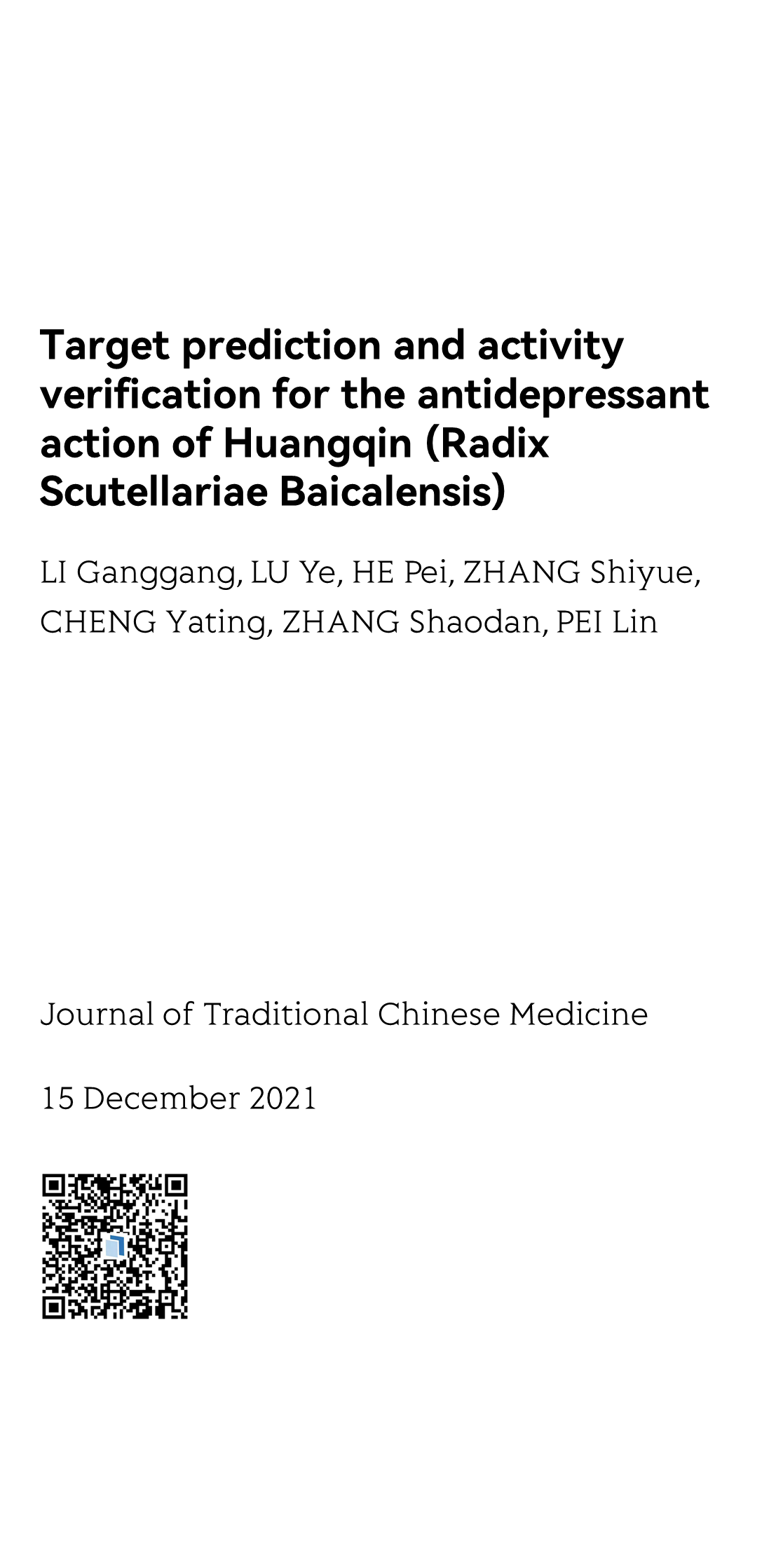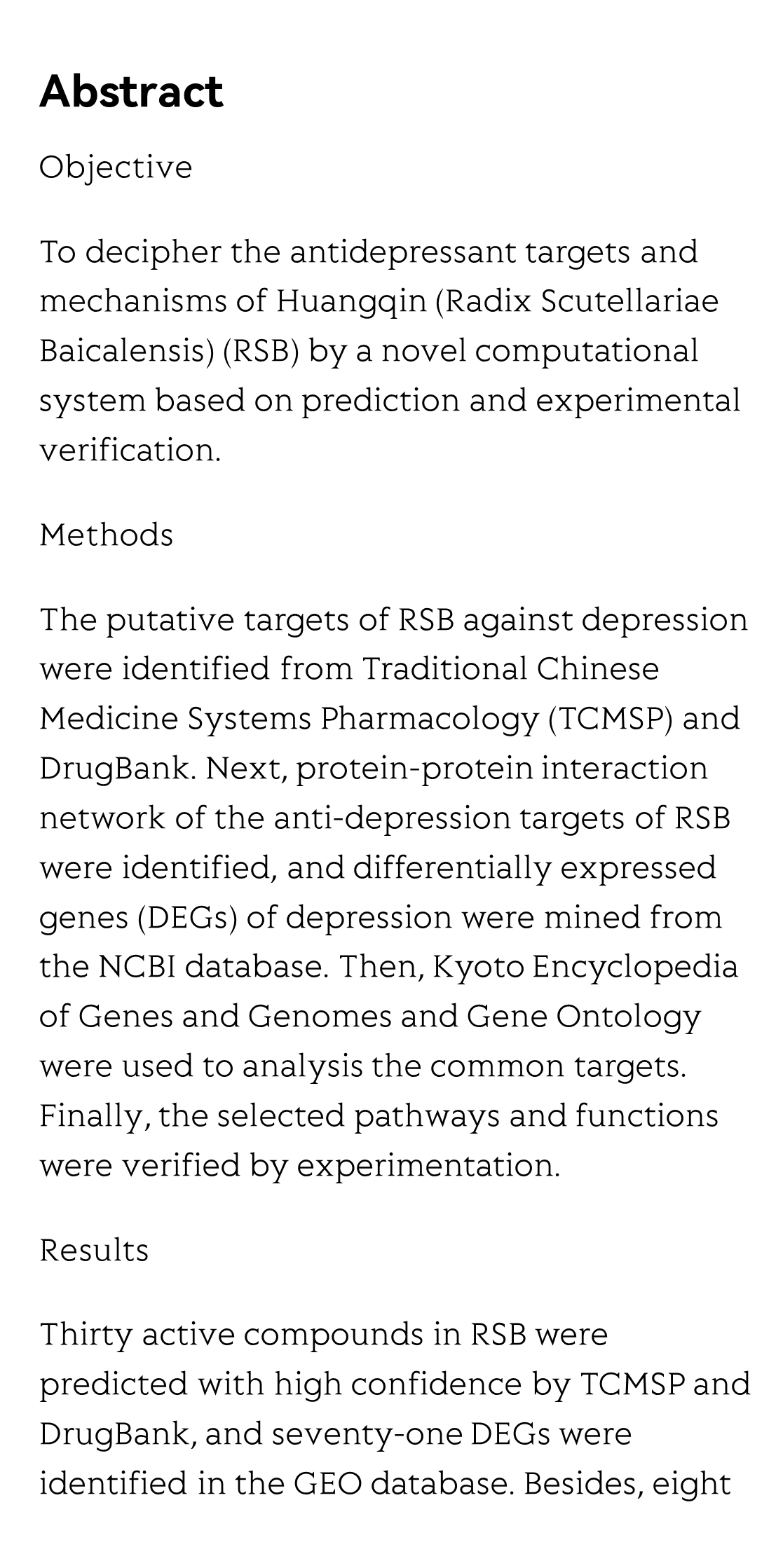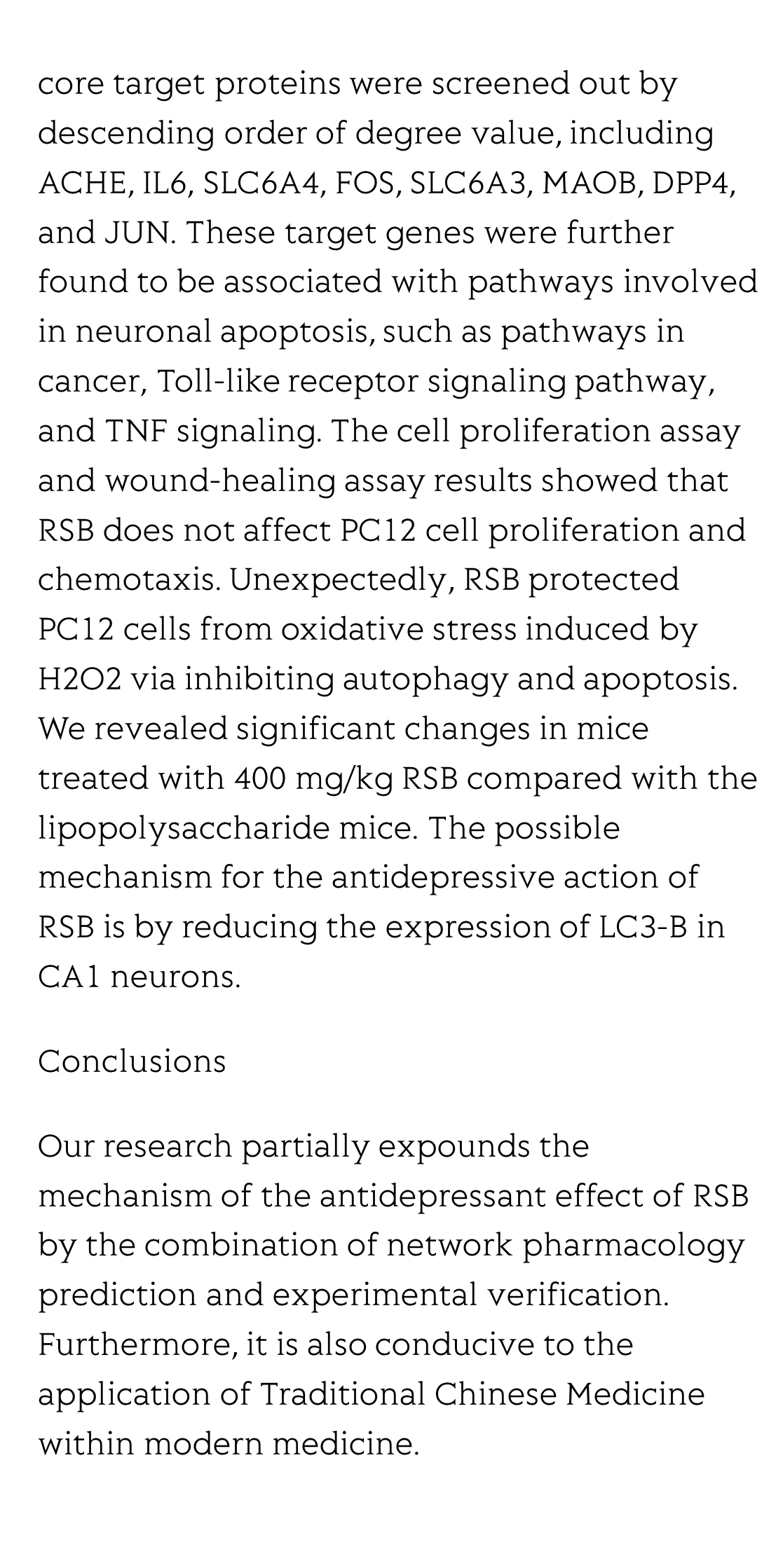(Peer-Reviewed) Target prediction and activity verification for the antidepressant action of Huangqin (Radix Scutellariae Baicalensis)
LI Ganggang 李刚刚 ¹ ⁴, LU Ye 芦晔 ², HE Pei 何培 ², ZHANG Shiyue ¹, CHENG Yating ¹, ZHANG Shaodan 张少丹 ³, PEI Lin 裴林 ¹ ²
¹ School of Basic Medical Sciences, Hebei University of Chinese Medicine, Shijiazhuang 050051, China
中国 石家庄 河北中医学院 基础医学院
² Hebei Key Laboratory of Turbidity, Hebei Academy of Chinese Medicine Sciences, Shijiazhuang 050011, China
中国 石家庄 河北省中医药科学院 河北省浊毒证重点实验室
³ Department of pediatrics, Second Hospital of Hebei Medical University, Shijiazhuang 050073, China
中国 石家庄 河北医科大学第二医院儿科
⁴ Department of Traditional Chinese Medicine, Anyang Vocational and Technical College, Anyang 455000, China
中国 安阳 安阳职业技术学院中医系
Objective
To decipher the antidepressant targets and mechanisms of Huangqin (Radix Scutellariae Baicalensis) (RSB) by a novel computational system based on prediction and experimental verification.
Methods
The putative targets of RSB against depression were identified from Traditional Chinese
Medicine Systems Pharmacology (TCMSP) and DrugBank. Next, protein-protein interaction network of the anti-depression targets of RSB were identified, and differentially expressed genes (DEGs) of depression were mined from the NCBI database. Then, Kyoto Encyclopedia of Genes and Genomes and Gene Ontology were used to analysis the common targets. Finally, the selected pathways and functions were verified by experimentation.
Results
Thirty active compounds in RSB were predicted with high confidence by TCMSP and DrugBank, and seventy-one DEGs were identified in the GEO database. Besides, eight core target proteins were screened out by descending order of degree value, including ACHE, IL6, SLC6A4, FOS, SLC6A3, MAOB, DPP4, and JUN. These target genes were further found to be associated with pathways involved in neuronal apoptosis, such as pathways in cancer, Toll-like receptor signaling pathway, and TNF signaling. The cell proliferation assay and wound-healing assay results showed that RSB does not affect PC12 cell proliferation and chemotaxis. Unexpectedly, RSB protected PC12 cells from oxidative stress induced by H2O2 via inhibiting autophagy and apoptosis. We revealed significant changes in mice treated with 400 mg/kg RSB compared with the lipopolysaccharide mice. The possible mechanism for the antidepressive action of RSB is by reducing the expression of LC3-B in CA1 neurons.
Conclusions
Our research partially expounds the mechanism of the antidepressant effect of RSB
by the combination of network pharmacology prediction and experimental verification. Furthermore, it is also conducive to the application of Traditional Chinese Medicine within modern medicine.
Flicker minimization in power-saving displays enabled by measurement of difference in flexoelectric coefficients and displacement-current in positive dielectric anisotropy liquid crystals
Junho Jung, HaYoung Jung, GyuRi Choi, HanByeol Park, Sun-Mi Park, Ki-Sun Kwon, Heui-Seok Jin, Dong-Jin Lee, Hoon Jeong, JeongKi Park, Byeong Koo Kim, Seung Hee Lee, MinSu Kim
Opto-Electronic Advances
2025-09-25
Dual-frequency angular-multiplexed fringe projection profilometry with deep learning: breaking hardware limits for ultra-high-speed 3D imaging
Wenwu Chen, Yifan Liu, Shijie Feng, Wei Yin, Jiaming Qian, Yixuan Li, Hang Zhang, Maciej Trusiak, Malgorzata Kujawinska, Qian Chen, Chao Zuo
Opto-Electronic Advances
2025-09-25







